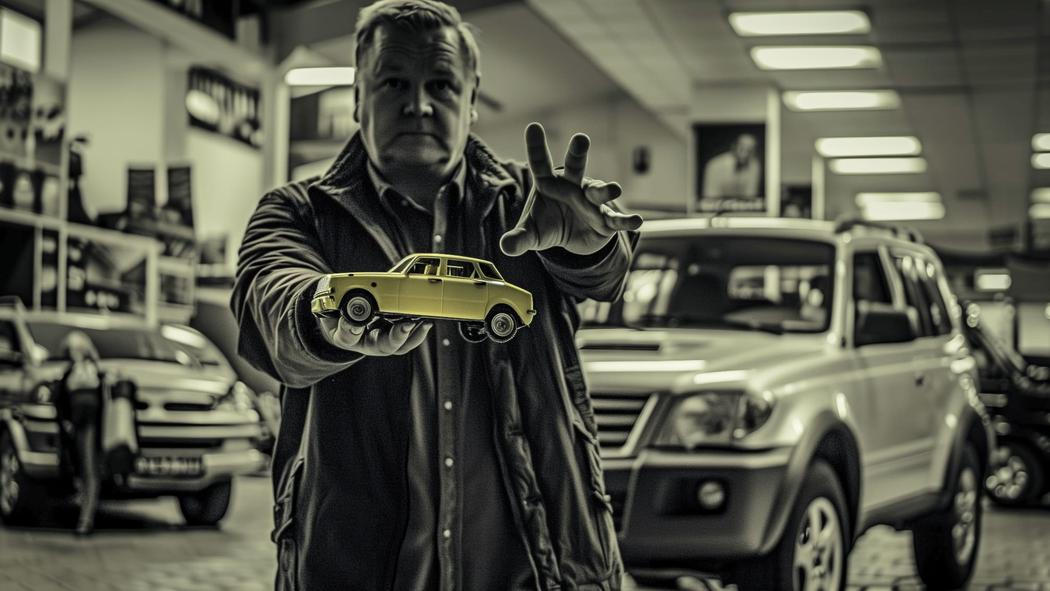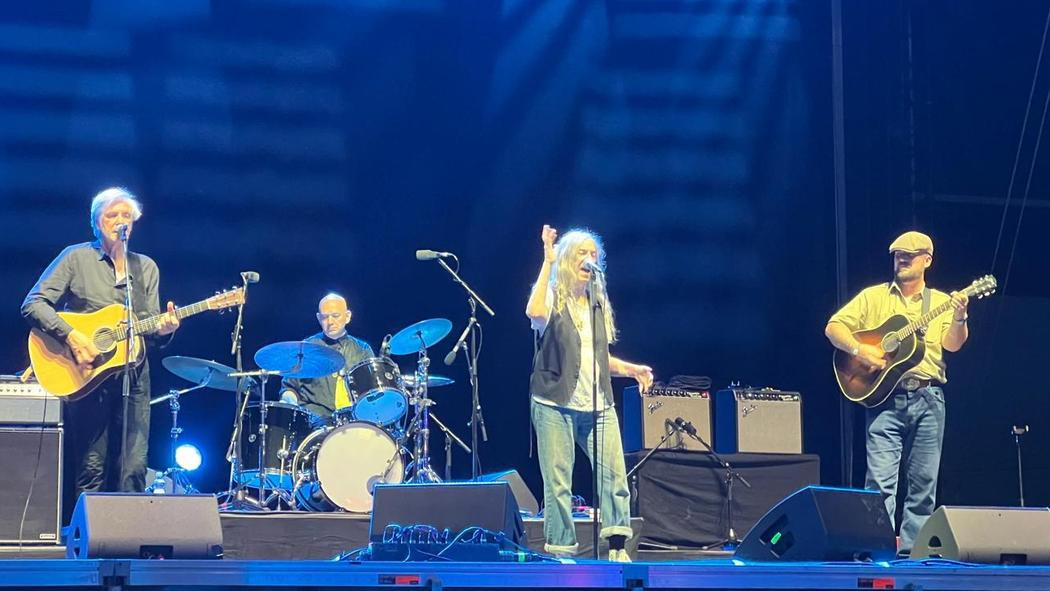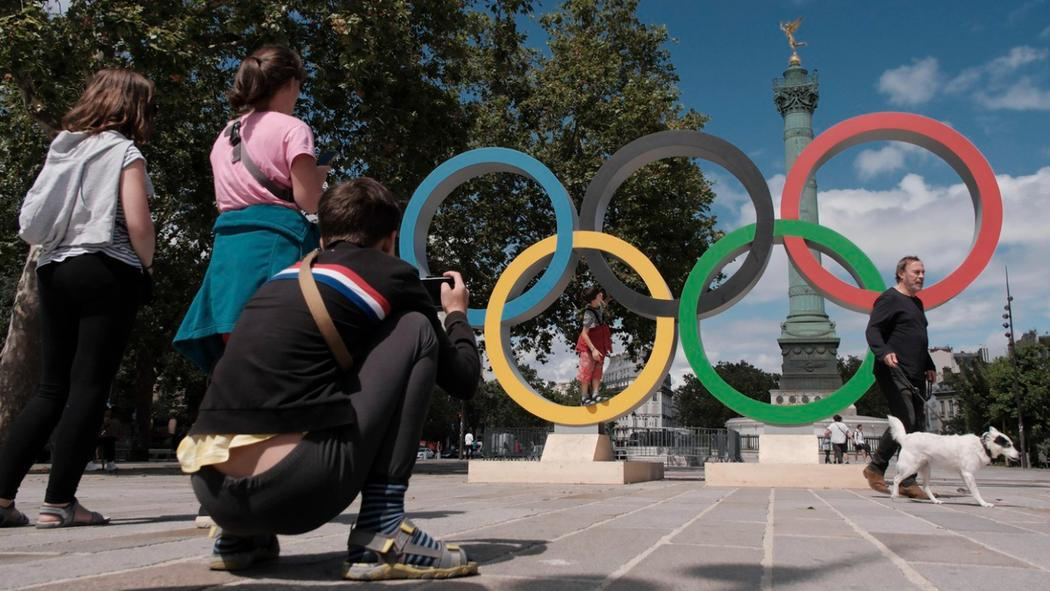The following story is an excerpt from forthcoming nonfiction book written by Andrew Giarelli: Millennial Mitteleuropa: 2011-2023, to be published by danzig & unfried, Vienna, early 2024.
I am a very lucky American, living in Prague as a college professor at Anglo-American University two-thirds of every year (the other third is in Portland, Oregon). However – I say it unashamedly because real Pražané say it too – this magical town sometimes wears and dulls the spirit. I have a few second cities in old Mitteleuropa, places where I hole up for 10 days or so with a load of work and a list of cafes in which to do it, or at least pretend to do it. Zagreb, Croatia’s capital, is my favorite.
Zagreb’s quality is muted, but it draws me from Prague repeatedly. It’s compact enough that I should be done with it by now, but I’m not. Locals call it “Little Vienna,” and on a hike up Sljema mountain one I met said Zagreb is lovely but of course, Vienna is the best of all these central European cities. I’m not so sure. Certainly, Zagreb undermines superlatives. What superlatives fit a flatland city stretching along three Habsburg thoroughfares at the foot of the southernmost Alps, with a modest older town tucked into the foothills above, neither squid nor bear?
I sit at an outdoor café on Ilirski Trg, the old town’s highest square. The two towers of the Cathedral of the Assumption of the Blessed Virgin glow in the sunshine. Suddenly Croats at three surrounding tables start huffing cigarettes, so I move. The waiter raises an eyebrow, an inheritance from tight-lipped Vienna, I suppose; down in Dalmatia they smoke just as intensely but I’d get a sympathetic smile, I’m sure.
Smoke was a problem last night at a lower town bistro, too. They smoked indoors as well as out on the sidewalk tables, but I persisted because the wine was so good. The young barman with a long greying beard said they stocked only organic wines, and thus hardly any Croatian ones.
“They’re still too focused on profit,” he said. So he sold mostly French, Italian and Austrian varieties. “The Austrians are amazing in this regard,” he added. Wow, a resident of the former empire praising it! I don’t see this from many Czechs.
“They had a wonderful chance, the Austrians,” says my Czech friend Roman, who views Habsburg history as oppressor history. “They could have supported our independence and kept a kind of confederation. But they blew it.”
“Yes, Austria is wonderful,” says my other Czech friend and former Czechoslovak dissident Daniel Kumermann, who as an Austrian’s son under communism could visit Vienna, outside the Iron Curtain, until he was 13. “Too bad about the Austrians, though.”
Now bells ring beneath my café on Ilirsky Trg. Next will come the Lotrščak Tower noontime cannon. There it is — no, that’s just some city worker dumping a recycling container full of bottles. The grumpy café owner just shrugged when I asked what was up, why didn't the cannon blow?
I gave up and walked the 20 meters to the city museum, which started with both real and re-created Iron Age artifacts from this region between the Alps’ southern foot and the Sava River valley. How similar were the huts of 12th-14th century B.C. Inhabitants to those of their 1st century B.C. descendants who met the Romans! No change, for a dozen centuries? A 6th-7th B.C. outdoor fireplace was perforated on top, its serpentine design repeated on what remained of the oven's body. We change slowly – except when we change quickly. Rome changed Illyria quickly, as many pieces of ancient Roman bridges, arches, stadiums, theatres, military barracks and roads show. But the Illyrians, now Christianized, persisted past Rome itself.
Zagreb tourist brochures joke about its history of witch hunts nowadays. It was not really so funny. The museum's medieval section showed chilling witch trial records from the 15th to the 18th centuries. From a list of 146 convicted witches in this period, the majority had their executions stayed. But many did not. Some were identified in those records:
• Margareta, a customs officer's wife: burned 1429.
• Elizabeta's daughter: burned 1429.
• Ursula, a shoemaker's daughter: burned 1496.
• Kasić, “a mother”: burned 1660.
• Kasić's elder daughter: burned 1660.
• Kasić's younger daughter: ran away 1660.
• 15 nameless women: burned 1685.
An untold story awaits about that younger daughter of Kasić. Who helped her escape her mother’s and sister’s fate, and how?
The last five women burned as witches here, all in 1751, come with full names: Marijana Vagrinac, Marija Fučkan, Marijana Brakec, Magda Brković Benković, Dortea Blašić. Five years later, Empress Maria Theresa outlawed the death penalty for witchcraft. The empress was a mixed bag. She certainly is a model of 18th century female authority, refusing to cede power to her official co-rulers, her husband Emperor Francis I and her oldest son Emperor Joseph II. She raised living standards and introduced educational and medical reforms. But she persecuted Jews and Protestants, consolidated censorship, introduced a Chastity Commission that investigated and punished not just prostitution but also adultery and homosexuality, and consolidated censorship. Though she eased up on witches, she was annoyed when her co-emperor son, infected by the same newfangled Enlightenment ideals roiling France and Britain’s American colonies, managed to get torture outlawed in 1776.
Suddenly a pack of early teenaged school kids invaded the witch exhibit, and their teacher could not keep them from gawking and gasping and joking. They would not have behaved like this under Maria Theresa’s school system. Avoiding them, I skipped half a dozen rooms full of 15th-19th century church statuary and documents, figuring they would race through this stuff, too, once sated with witch-burning.
Nineteenth and early 20th century Zagreb enthralled me, though. Supposedly, these provincial Habsburg cities were dull and anyone with brains and ambition escaped to Vienna or Paris. In fact, Zagreb was a charming, bubbling center of culture and worldly pleasure, mixed with reminders of rural roots. “Each morning on the Ilica one can watch the daily bustle of the fair and the picturesque costumes of the peasantry from surrounding villages,” wrote city councilor Adolf Hudovski in an 1892 guidebook, “And at night, especially during the time for ‘Korso’, admire Zagreb’s many beautiful women.”
I needed no more than that old city father’s advice. First, the peasants. Next morning, I walked up from my rented flat to the Ilica, the city’s longest street running along the foot of Medvednica mountain. I crossed bustling central Josip Jelačić square, whose statue of the 19th century Croatian national hero presides over a swirl of locals and tourists, and I climbed the stairs to the Dolac. Mitteleuropa’s best outdoor market fills a vast square with an indoor fish market and also a labyrinthine underground meat, cheese and bread market with Croatia’s regional bounty, from mountainous Zagorje north of Zagreb to southern coastal Dalmatia.
I stopped at the statue of Kumica Barica, who represents all the headscarved women selling local cottage cheeses, eggs and milks at the market’s entrance. A kumica is a diminutive of “godmother”, the name for these ladies whose ancestors sold their dairy goods from massive head-borne baskets, but now it is a little insulting in modern Croatian – a loud, uncouth country woman in a city that prizes elegance.
Then I visited the tables of kumice themselves, startling them with my usual introduction that I have memorized in five languages:“Oprostite, gospođine, ne govorim dobro hrvatski, ali pokušavam.” Though this draws praise, I did not realize until my third Zagreb visit that when I added, “Govorim malo slovenski,” thinking I was saying that I did speak a little Slovak, I was actually saying that I spoke a little Slovenian, for though “Slovak” in Slovak (and Czech) is “slovensky”, it is “slovački” in Croatian. “Slovenian” is “slovinsky” in Slovak (and Czech). And in Slovenian, “Slovenian” is “slovensko” and “Slovak” is “slovaško”. I think.
The Dolac was my happy downfall. Though a dozen Zagreb museums awaited, I could never visit more than one a day. Instead, I had to discuss Medvednica mushrooms with the man who had picked them the day before on that mountain’s wooded slopes, or decide whose white Slavonian Graševina from competing side-by-side tables would return to Prague with me, and who would sell me a small plastic bottle of Slavonian olive oil, not as prized as Istrian varieties, but still wonderful, and to flirt with the Dalmatian fig girl. I noticed that one old lady describing her tomatoes put thumb and two fingers to her lips with a kiss, just like the Turkish grocer in Prague’s Nové Město did when describing the long puffy rectangle of Turkish bread he sold me. Croatia was all but conquered by the Turks – had she inherited the gesture from them?
The Dolac is lined with small bars, each with a couple outdoor tables, each with limited lunchtime menus of lignje (squid), srdele (sardines) and škampi (shrimp), grilled, fried or with rižoto, paški sir (the famous sheep cheese from Pag island) and Dalmatian pršut (usually smoked, unlike Italian prosciutto). I quickly settled into Amfora, avoiding the outside tables and finding a cramped inside corner, where gruff Zagrebčani my age lingered over wine. Bantering with the battle-hardened waitresses came easy, and the regulars started speaking to me faster than Czechs or Slovaks would, though they must have marveled at my strange pan-Slavic Czecho-Slovak-Croatian mix, with a little Italian when nothing else worked.
“Ha, you’re drinking beer with your lunch, a typical Czech!” one called. I was hooked and have never lunched anywhere else at Dolac in several long Zagreb sojourns. After that first time I switched to wine, swaying drowsily but urgently out of the place around 1:30 to catch the last half hour downstairs for pršut, sir, and kobasica (sausage). As for kruh (bread), I already had a favorite bakery behind the cathedral that sold lepinja, the distinct Croatian flatbread.
I barely had time for an afternoon nap before heading back out for gospodin Hudovski’s second tip, the Corso in early evening, with its lovely ladies. I hummed to myself the gently bittersweet Croatian pop classic “Zagrebačkim Ulicama” (“The Streets of Zagreb”) by Jadranko Črnko. There is something to say for a “little Vienna” – sometimes the big real one is too much, obscuring the very charms that make it famous. Then I would land at someplace like that wine bar on Nikola Tesla street, drinking a Croatian Kosovec Frankovka, where that long-bearded barman who favored Austrian wines poured my second glass a little disapprovingly.
“When you go to Zagreb,” my first Croatian friend told me, “you will think nobody has a job. They just seem to sit around in cafes all day long.” This was a Croat living in Vienna, operating a Croat deli, so perhaps he had been ruined by serious Viennese business habits. Maybe he longed for the špica, the hours dressed in one’s best, lounging in cafes around Flower Square. Croats sure claim their café time, and space, too – it gets hard navigating that square just a hop away from central Ban Josip Jelačić square, which is even more crowded. Jadranko Črnko in his lovely old video strolls and watches everything around here, but too many young people now rudely march right through the middle of outdoor tables, fingering smart phones that only seem to stupefy them. They sicken me, for they are the final death of all differences in once wildly diverse Mitteleuropa.
Easter Saturday dawned rainy. Sretan Uskrs (“happy Easter”), people were saying as they hustled down Savska Cesta past the ornate Croatian National Theatre. I managed a short visit to the Ethnographic Museum, where the special show was about Dalmatian olive oil traditions. “Sweet but not honey, bitter but not wormwood,”one folk saying goes. “If you see yourself picking olives, you will earn money,” says another, from a region where money was hard to find until tourism exploded and started killing the very tradition now celebrated here in a museum. Olive branches were displayed in homes for good luck during the harvest, and for protecting children against witches. Olives should be harvested on Nov. 1, All Souls Day -- “Mrtvi dan skale van” (“It’s Day of the Dead, bring out the ladders”), Dalmatians say.
At the Lower Town’s modern art museum decicated to 19th and 20th century art (not the sprawling new Contemporary Art Museum across the river in Novi Zagreb), a picture emerged of Croatia’s convulsive changes over little more than a century. On the way to the museum I’d passed Anton Fernkorn’s “St. George Kills the Dragon,” which now stands near the National Theatre but was cast in 1857 for Vienna. Even its art movements say something about Croatian demands for cultural independence from Austro-Hungarian domination, the mid-nineteenth century’s great issue here as in Bohemia. The struggle split familes and towns, some choosing Serbian affiliation, some Hungarian, some – like problematic hero Ban Josip Jelacic whose statue now rules the main square – playing a double or even triple game, helping Austria crush Hungarian nationalist democrats in hopes of gaining some freedom from the latter. But I sympathized mostly with the dragon, who of course represents paganism no matter how much a mid-19th century Croatian saw in its violent death throes Austria, or Hungary, or Serbia, or even the waning Ottoman empire.
These 19th century Croatian artists’ names show the nation’s multiculturalism, here as elsewhere in Mitteleuropa now largely extinguished. Mihael Stroj (Stroy in German), a Slovenian, painted Ivan Nepomuk Crnkovic, a Zagreb big shot whose middle name came from the Czech saint. Ferdinand Quiquerez (aka Ferdo Kikerec), who painted popular history scenes, was born in Budapest to an Austrian military doctor whose family was French and a mother who was a German-speaking Slovenian. Zadar native Franjo Salghetti Drioli was Dalmatia’s most prominent 19th century painter; Adolf Waldinger, born a generation later in 1843, was a Danube Swabian from Osijek in Slavonia, eastern inland Croatia under Hungarian rule.
A strange air of delight and doom hung over them as Armageddon neared. Ljubo Babić’s 1916 painting “Crna Zastava” (“Black Flag”) reflects the terrifying moment: a torn black rectangle hangs over a street crowd below, one big paint drop hanging from it, about to fall. Over the next dramatic quarter century Austria-Hungary collapsed, Czechoslovakia was born, and a new Yugoslavia struggled amid assassinations and coups and ethnic rivalries. Croatia, like Hungary, turned fascist. Andrija Maurović, father of Yugoslav comic book artists, offered a telling assessment in his 1940 “Brod bez kompasa”(“Ship Without Compass"): nobody knows where the ship is going, the seamen are arguing, a wealthy passenger smokes a cigar while reclining and waves off the captain who also doesn’t seem to know or care about their course.
The show skipped the harsh reality of Ustaše party rule from 1941-45, the genocidal Nazi puppet state, followed by the also murderous Communist takeover and the more settled 1950s and early 60s under Marshall Josep Broz Tito.
But across Communist Mitteleuropa, avant-gardes arose starting in the late 1960s, challenging sclerotic regimes at the aesthetic level. Slovenia’s Grupa Oho took performance art to the streets of Ljubljana. “The project is based on Zenon's aphoria that one cannot cross the stadium as one - because of the infine divisibility of the distance - cannot even start to walk,” announced one from1970. Sarajevan Braco Dimitrijević showed his photos of “Passers-by I met in London and Milan,” as Yugoslavia opened increasingly to the West in the early 1970s.
This opening spread across the totalitarian Eastern bloc, a special exhibit on the region’s avant-garde artists showed. In Hungary, Sándor Pinczehelyi led the way, his 1973 “Hammer and Sickle” not a celebration at all but rather an imprisoning within the symbol. Poland’s Natalia LL was exploring “aesthetic and erotic processes of consumption” with photographic collections like “Permafo-Suma” and “Consumption Art.” Polish Actionist Jerzy Bereś – an Iron Curtain cousin to the radical 1960s Vienna Actionists – in 1978 produced Msza Romantyczna (“Romantric Mass”), in which he stripped naked befoire a fiery “Altar of Fulfillment.” In hardline Communist Czechoslovakia suddenly scenting slight mid-60s winds of tolerance and openness, the Slovak artist Stano Filko carried out “actions”: this exhibit showed “HAPPSOC III: Altar of Contemporaneity…. an event inciting the perception of reality removed from the stereotype of its existence.” There was no intervention by the artist; it was just “found society” in which the invitee was given a foldout map of Czechoslovakia and a pocket mirror, and I could not figure out what happened from there. Then there was Zagreb’s own neo-Dada Grupa Gorgona, a scene-setter in the first half of the ‘60s, and more. Artists across these Soviet satellite states were the vanguard against totalitarianism in a battle that would last another two decades.
The exhibit paid scant attention to those two final decades of communism, the ‘70s and ‘80s, leaping forward to the 1990s. Ivica Malčić’s “The Happiest Painter in the World” from 1992 shows four nattily dressed young Yugoslav men (and one woman in panties) and a big young man above like an angel, arms outstretched the picture captioned: “Here comes success.” Instead came massacres, ethnic cleasning, rape as a weapon of inter-ethnic war. Zlatko Kopljar’s Zrtvovanje (“Sacrifice”) from the very next year, 1993, the inside of an oven, all black, with a white fire and black ashes flying. But I left, because it was time for Uskrs – Easter – at the cathedral.










